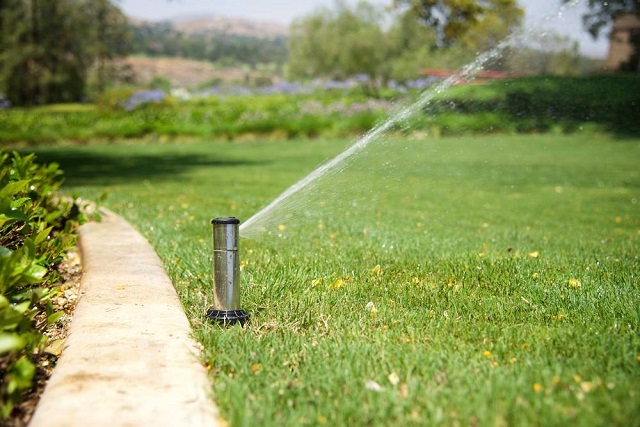Water saving renovations are money saving renovations. Leaky pipes, outdated appliances, and poor irrigation practices hike up your water and energy bills and wreak havoc on your septic system. And, in drought-ridden states, water wasting can be subject to hefty fines and usage audits.
Luckily, many water-saving home renovations are simple and inexpensive. The costlier renovations, like purchasing and installing new appliances, offer long term gains by saving thousands of gallons of water a year.
Whether you’re renovating to fix an existing water problem or looking to save money with increased sustainability, here are seven of the top water-conserving renovations to consider.
1. Repair Leaking Pipes and Faucets
Hidden leaks in your home can ruin your home’s interior and flood your lawn. One indicator of a leak is an inconsistent water meter reading. Check your water meter before and after a two-hour period when water isn’t being used. If the meter reading changes between readings, you probably have a leak. Other signs include:
- Damp walls
- Excess mold
- Noticeable drop in water pressure
- Cracks in pavement
- Unusually high water bills
If your home has any of these signs, consider calling a pro to inspect your pipes.
2. Install Sprinklers with Timers or Rain Sensors
Putting sprinklers on a timer can keep your water output consistent and keep you from having to monitor its progress. Unattended hoses and sprinklers can waste hundreds of gallons of water in just a few hours. Set your timer for early in the morning (6am-7 am) so the water won’t evaporate in the sunlight.
Another inexpensive water saving trick is to add rain sensors to your sprinklers. The sensors will tell them to skip an irrigation cycle if there was rainfall.
3. Install a Rain Barrel
Collecting rainwater that your roof or lawn naturally collect can save you a lot of water. Installing a rain barrel is a simple and inexpensive way to reduce your water bill and reduce your ecological footprint.
4. Use a Drip Irrigation System
Better yet, consider drip irrigation to water your lawn. A drip system applies a small amount of water uniformly on your lawn. Another benefit? It improves accuracy that your sprinklers can’t compete with. No more dead grass and brown spots.
5. Install a Water Aerator on Your Kitchen Sink
This renovation is an easy DIY. The aerator limits water flow to a non-splashing stream. This slows the flow of water to cut water waste. To install the water aerator, simply screw it onto your faucet head.
6. Purchase a Low Flow or Dual Flush Toilet
A low-flow or dual flush toilet will save thousands of gallons of water a year and reduce the load on your septic system, extending its lifespan. With a dual flush system, you can even purchase models with different buttons for solid and liquid waste, customizing how much water you put out and reducing water use by up to 67%. According to the San Diego Water Department, that’s up to 350 gallons per week!
Or, repair your current toilet. Over time, the parts (especially the flapper valve) corrode, bend, and become less efficient, which causes leaks. These parts are generally inexpensive and easy to install.
7. Buy a New Shower Head
Installing a new shower head is a cheap, easy change you can make to save water. Don’t worry, you can still have a satisfying shower with a low-flow shower head. You want a shower head that delivers 2.5 gallons of water per minute or less (as opposed to older models which deliver 8 gallons per minute. Yikes!).
8. Replace Old Appliances with Energy Efficient Models
Front loading wash machines save up to half the water of a top load washer.
Look for Energy Star qualified appliances which meet the EPA and Department of Energy’s energy saving standards.
Saving water doesn’t have to be a daily chore. With the right renovations, you can cut your water bill without breaking the bank.

 Organic Home Gardening Tips to Feed Your Whole Family
Organic Home Gardening Tips to Feed Your Whole Family  Composting and Landscaping at Home
Composting and Landscaping at Home  Tub and Stall Shower Installation
Tub and Stall Shower Installation  Removing Bathroom Fixtures When Remodeling
Removing Bathroom Fixtures When Remodeling  Dual Flush Toilets
Dual Flush Toilets 

I like this article. I enjoyed reading about the rain sensors and benefits of sprinkler systems. I think a sprinkler system without a rain sensor is just as bad as not having one at all. You will either drown your grass or kill your grass.